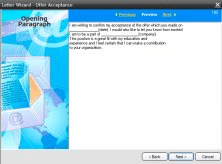
Duplo will create a new VPC, with 2 subnets (private, public) in each availability zone, creates necessary security groups, NAT Gateway, Internet Gateway, Route tables.etc. It opens up a form where it asks to enter basic information about the new environment that is needed. Proceed to Administrator -> Infrastructure. If the user needs a host for development purposes say like a test machine then he would mark is a not part of the pool or fleet.Ī completely new isolated environment can be created for Usecases from Duplo. Docker Host or Fleet Host: If a host is marked as part of the fleet then DuploCloud will use it to deploy containers.The domain name must have been configured in the system by the admin. DNS Name: By default when a Service is exposed via an ELB, Duplo will create a friendly DNS Name.You can choose to make it internal which will expose it only within your VPC to other applications.

Optionally a wild card certificate can be chosen for SSL termination. ELB is defined as - Service name + container-port + External port + Internal-or-internet facing. ELB: A Service can be exposed outside of the tenant\project via an ELB and DNS name.Duplo also allows running applications that are not packaged as Docker images. It is specified as - image-name replicas env-variables vol-mappings if any.
#Duplo job creator software download code#
Service: Service is your appliction code packaged as a single docker image and running as a set of one or more containers.

Each user could have access to one more tenants/projects. User: This is an individual with a user id.For applications to be reachable outside the sandbox a Port mapping or ELB must be created. All resources in a given tenant are isolated from another tenant via Security groups and IAM policies (optionally VPC). Tenant or Project: Tenant or Project is a sandbox or unit of deployment.In AWS there is a NAT gateway for private subnets. Each infrastructure has a set of subnets spread across multiple availability zones. Infrastructure: An infrastructure maps 1:1 with a VPC/VNET and can be in any region.US-West-2 unless specified otherwise by your enterprise administrator or during signup. Use the AWS constructor that does not take credentials but takes only region which must be You do not need any access keys in your code to access these services. The interface to create these services via Duplo will be very declarative and self-explanatory. If the repository is private, then your will have to set the credentials for Docker hub in your Duplo account.ĪWS SDK Familiarity: If your are using AWS services like S3, DynamoDB, SQS, and SNS you must be familiar with a very basic knowledge of how these services can be consumed. The Image should have been pushed to your repository.You should have a docker image for your application that has been tested locally in your computer.

To login to Duplo you either need a Google or Office365 account.ĭocker Knowledge: If you are deploying a Docker based microservice using Duplo then it is assumed that you are familiar with Docker. Sign-in Account: Duplo works off Google and O365 Oauth. Here is an explainer video about the product:ĭuplo Product Demo (AWS).mp4 from DuploCloud Inc on Vimeo.

Essentially, the software auto-generates the same automation scripts that a human being would have written manually. All configurations that have been created and applied by the software are transparently available to be reviewed and edited in your cloud account. Users interface with software via the browser UI and/or API calls and all data and configuration stays within your cloud account. These constructs are still in play, but Duplo software abstracts it away for you by auto-generating the configuration based on application needs.ĭuploCloud is a single tenant software that installs in your cloud account. It allows users to build applications via a simple declarative interface and not have to deal with low level infrastructure details like VPC, security groups, IAM, Jenkins setup etc. The robot has a resume with over 500 skills that include AWS, Azure, Kubernetes, Security and IOT among others. It is not a DevOps tool that requires a cloud expert to operate, but instead it is the cloud expert itself. It is the subject matter expert in digital form.


 0 kommentar(er)
0 kommentar(er)
